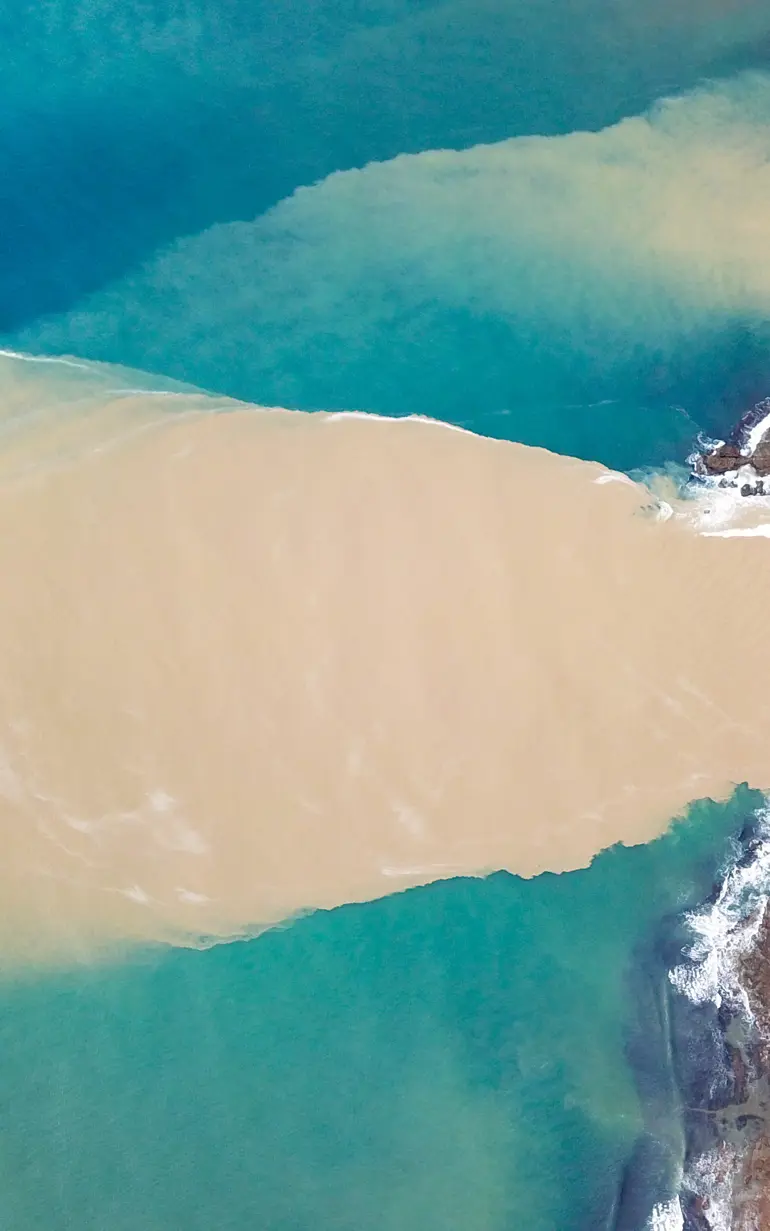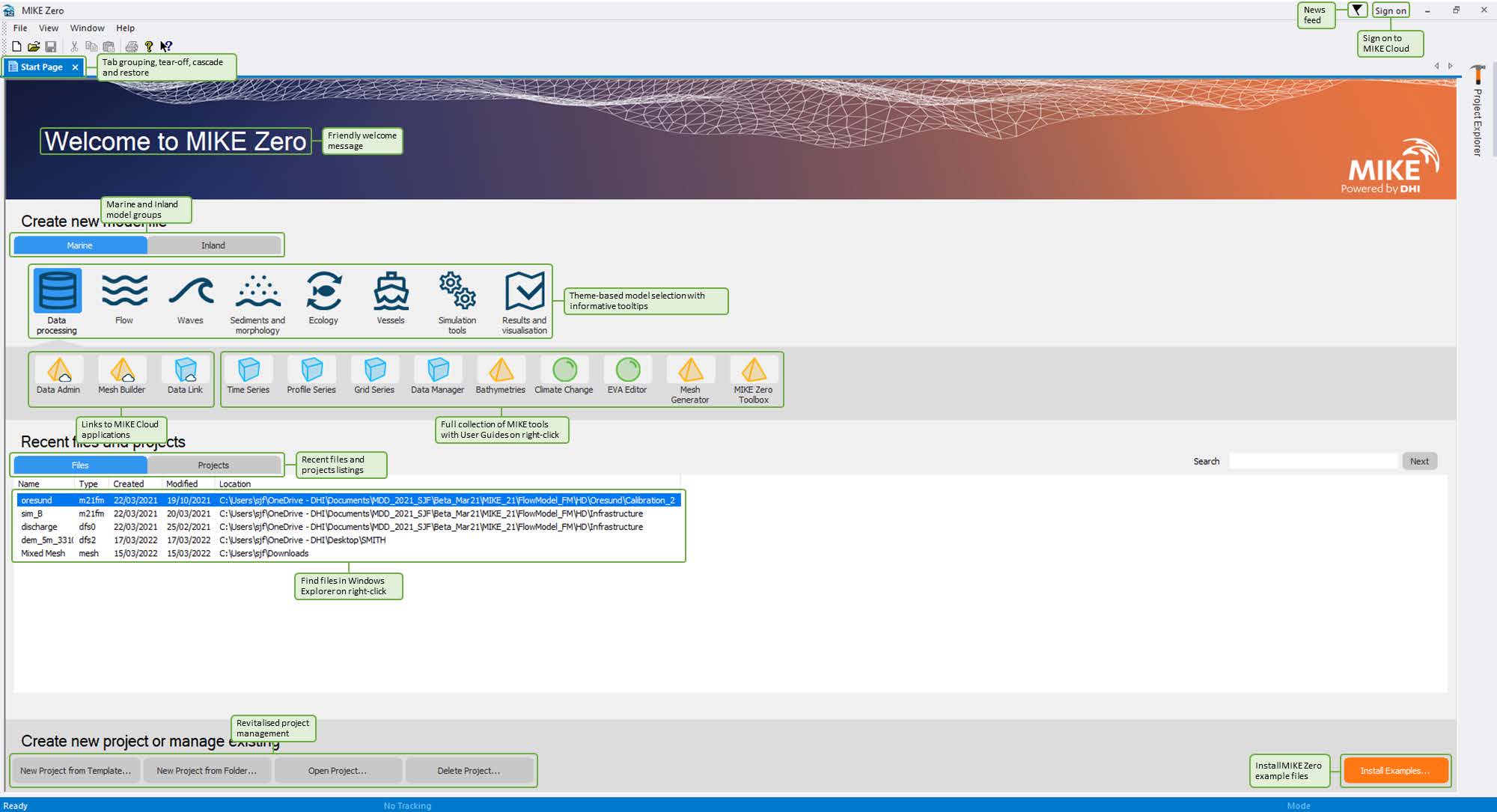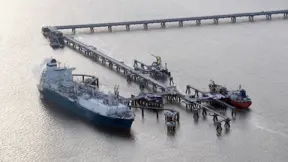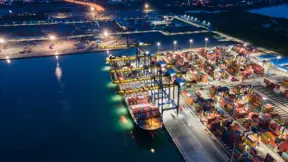

MIKE 21/3 Mud Transport
Analyse the impact of siltation on marine, brackish, and freshwater projects
MIKE 21/3 Mud Transport (MT) is a specialised software module designed for simulating the transport of fine-grained sediments, particularly mud, in coastal and marine environments. Essential for marine and environmental engineers, it analyses the impact of siltation on marine, brackish, and freshwater projects.
Incorporating advanced algorithms, MIKE 21/3 MT models sediment dynamics influenced by waves, currents, tides, and sediment characteristics. Whether optimising dredging operations, designing silt curtains for turbidity reduction, or ensuring environmental compliance, its integrated multi-fraction and multi-layer approaches transform data into actionable insights, driving project success. Users gain the capability to analyse sediment transport patterns, predict deposition and erosion, and assess human activities' impact on sediment dynamics in coastal and marine environments.
Interested in MIKE 21/3 MT?
Contact UsHow does MIKE 21/3 Mud Transport help?
No in-house modellers?
Get our expert modellers on board for your consulting projects either as a partner, to provide extended user support or for model and project reviews. Submit an inquiry
Areas of application

Coastal engineering studies
Enhance resilience by studying erosion and cohesive sediment dynamics under the influence of combined waves and currents.

Coastal erosion mitigation strategies
Mitigate coastal erosion by modelling mud movement and its effects on stability.

Dam break impact assessments
Predict mud flow and sediment dispersal post-dam failures to refine emergency response strategies.

Deployment of digital twins
Monitor and predict mud transport in real-time with accurate digital representations of aquatic environments.

Drought and water scarcity
Aid water management planning by analysing sediment buildup during droughts.

Environmental monitoring
Track mud distribution accurately to gauge its ecological impacts, particularly in siltation-sensitive zones.

Offshore planning, design, and construction
Secure offshore installations by simulating mud transport and deposition.

Optimisation of dredging operations
Improve dredging efficiency by analysing the spreading, dispersion, and fate of dredged materials.

Port design and optimisation
Optimise port functionality by assessing changes in sedimentation and siltation impacts in harbours and channels.

Sediment transport and morphology
Offer insights into mud transport processes to support sustainable habitat design and management.

Water quality evaluations
Evaluate how contaminated sediments impact water quality and local ecosystems in sensitive areas.
Additional capabilities & unique features
Explore our latest support resources, including guides, videos, and FAQs in our Knowledge Base.
What’s new in MIKE 21/3 Mud Transport: 2025
Analyse the impact of vessel propeller wash on seabed mud resuspension to understand sediment dynamics in high-traffic marine areas
The Mud Transport module now includes vessel propeller wash-induced mud resuspension. Leverage the Nearfield model, an embedded sub-model designed for analytical and integrated jet flow and bed impact assessments. Additionally, the Farfield model integrates MIKE 3 Flexible Mesh Hydrodynamic and Mud Transport modules for broader sediment transport analysis. With this fully decoupled solution, achieve faster and more efficient insights into sediment dynamics.
Extended feature set and scientific enhancements
The latest update introduces enhanced hotstart functionality, utilising layer and fraction distribution as initial conditions. Users now have additional options for erosion calculations, including a new RMS shear stress formulation and the ability to specify critical shear stress for each individual fraction. Dredging simulations benefit from new spilling types, expanding the scope of modelling possibilities. Furthermore, users can access new and improved outputs, such as extended output of mean velocity, bed distribution items, and three-dimensional bed parameters. To ensure optimal performance and accuracy, the update also includes substantial refactoring and modernization.
Calculate the influence of waves on erosion
Apply MIKE 21 Spectral Waves to calculate the influence of waves on erosion deposition patterns.
Specify source concentrations of each component in every source point
Point sources of dissolved and/or suspended components are important in many applications such as the release of sediments from rivers, intakes and outlets from cooling water or desalination plants. With MIKE 21/3 Mud Transport, you can specify source concentrations individually as either specified concentration or excess concentration.
Take morphological changes to the bed into consideration
If the morphological changes within the area of interest are expected to be comparable to the water depth in certain areas, this software can take the morphological impact on the hydrodynamics into consideration. Typical areas where this is necessary are shallow areas where long term effects are being considered or dredging/dumping sites in shallow areas.
Account for consolidation of deposited material during long-term simulations
If several bed layers are used, a transition rate can be applied. This will cause sediment from the top layers to be transferred to the subsequently lower layers.
Maximise speed, precision, and scale with High-Performance Computing (HPC) and parallelisation
The Mud Transport (MT) module leverages advanced parallelisation techniques to harness the power of multiple cores and GPUs, delivering exceptional performance. Specialised methods enhance calculation speeds for morphological modelling, ensuring faster results without compromising accuracy. Working with large models? Every MIKE 21/3 MT license and subscription now supports powerful Linux clusters equipped with hundreds of CPUs.
Account for bed shear stresses due to waves
Get more done in less time with the modernised MIKE Zero user interface
Save time and improve your modelling workflows using MIKE Zero’s upgraded editors and viewers. Take advantage of new keyboard shortcuts and themes, improved tabbing, tear off and cascade functionality plus easier access to User Guides and Scientific Documentation.
Access new tools, Cloud applications and an enhanced graphical overview from the redesigned MIKE Zero start page
MIKE Zero, DHI’s fully Windows integrated graphical user interface, is now better than ever and comes standard with all MIKE 21/3 software. Enjoy easy access to new MIKE Cloud applications and Cloud-enhanced functionality, plus an extended set of MIKE tools within theme-based (rather than product-based) interactive workflows. Ensure important model components such as sources and structures stay at the forefront with a new interactive, customisable floating mapping window. Lastly, the updated tabbing functionality will help you work in a more organised and efficient manner.

Analyse the impact of vessel propeller wash on seabed mud resuspension to understand sediment dynamics in high-traffic marine areas
The Mud Transport module now includes vessel propeller wash-induced mud resuspension. Leverage the Nearfield model, an embedded sub-model designed for analytical and integrated jet flow and bed impact assessments. Additionally, the Farfield model integrates MIKE 3 FM Hydrodynamic and Mud Transport modules for broader sediment transport analysis. With this fully decoupled solution, achieve faster and more efficient insights into sediment dynamics.
Benefit from significant enhancements to the MIKE Zero Data Extraction FM Tool
The tool now delivers improved performance through OpenMP parallelisation, enabling faster processing. Input data files can be easily viewed and validated, while output file selection has been streamlined to align with MIKE 21/3 input editors. Bathymetry can now be displayed in Geographical View, enhancing spatial understanding. Users can save 2D and 3D structured overlays as DFSU files across all modules (HD, TR, ST, MT, EL, PT), and horizontal plane outputs are now available for '3D' field types in all modules.
Let's get started
Learn how your project can benefit from this advanced mud transport modelling software.
You may also like
Related technologies
LITPACK
Simulate littoral processes and coastline kinetics for effective coastal management.
MIKE 21 Shoreline Morphology
Model long-term coastal evolution to efficiently address real-world engineering challenges.
MIKE 21-3 Sand Transport
Simulate the impact of sedimentation on ports, offshore energy, dredging, and coastal engineering.
How can we help?
With our global network of offices, we make sure you get the right answers to your local needs. Let us know what you're interested in (e.g., product features, trial license, pricing, etc.) and we will get back to you.


